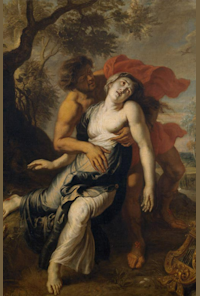L'Orfeo (Orfeo), Monteverdi
Share
Festival International d'Opéra Baroque de Beaune (2022)Information from arts organisation (Verified by Operabase)
22 July 2022 (1 performances)
Visit WebsiteOrfeo by Monteverdi, From (2022/2022), Conductor Stéphane Fuget, Hôtel-Dieu Museum - Hospices de Beaune, Beaune, France
Performance credits (Cast & Crew )
Conductor
Cast
Orfeo
Euridice
La Messaggera
(The messenger)
Caronte
Proserpina
Plutone
(Pluto)
Apollo
Primo pastore
(First shepherd)
Ensemble
Orchestra
Photos
3Further reading
Learn more about composer
Learn more about work




